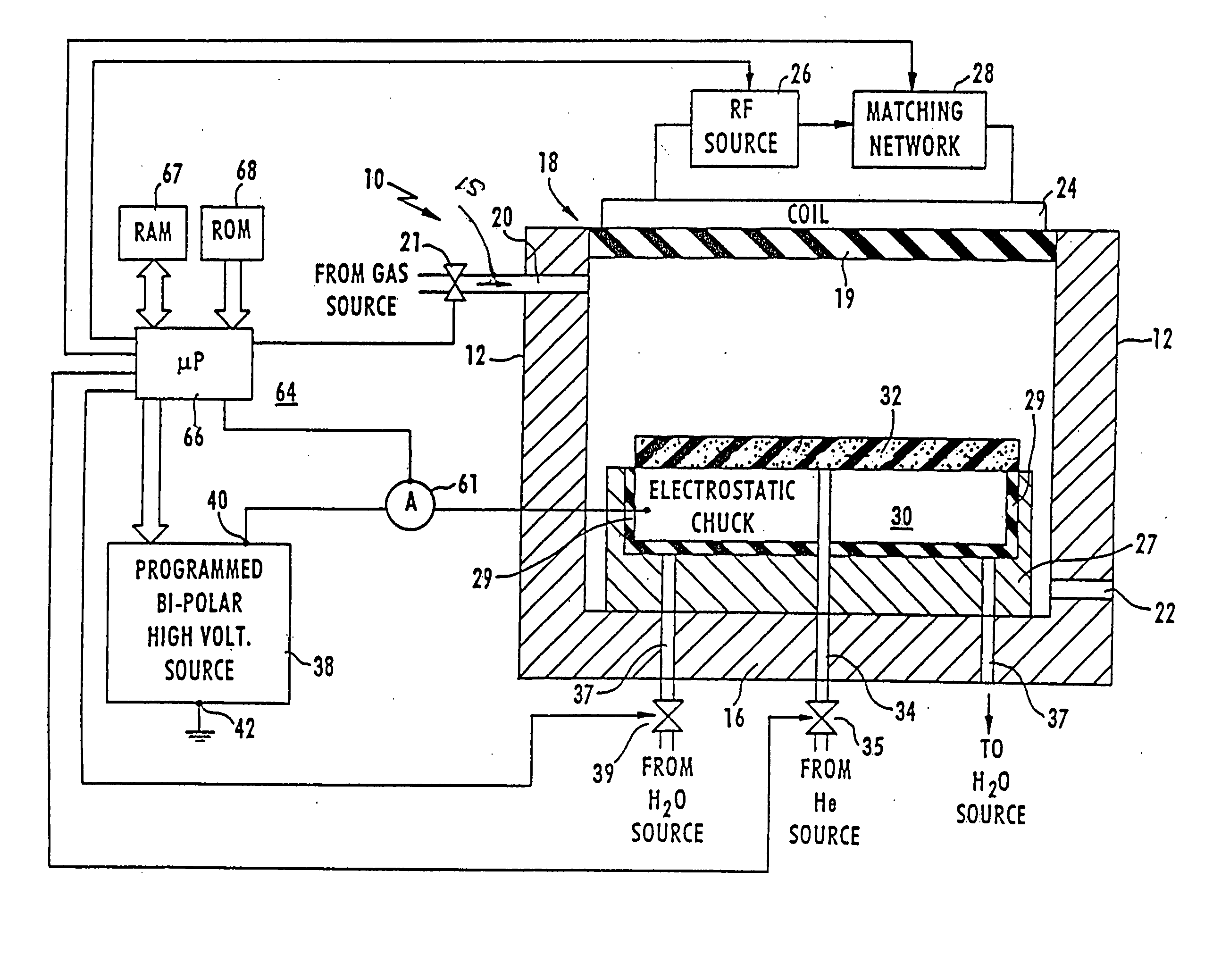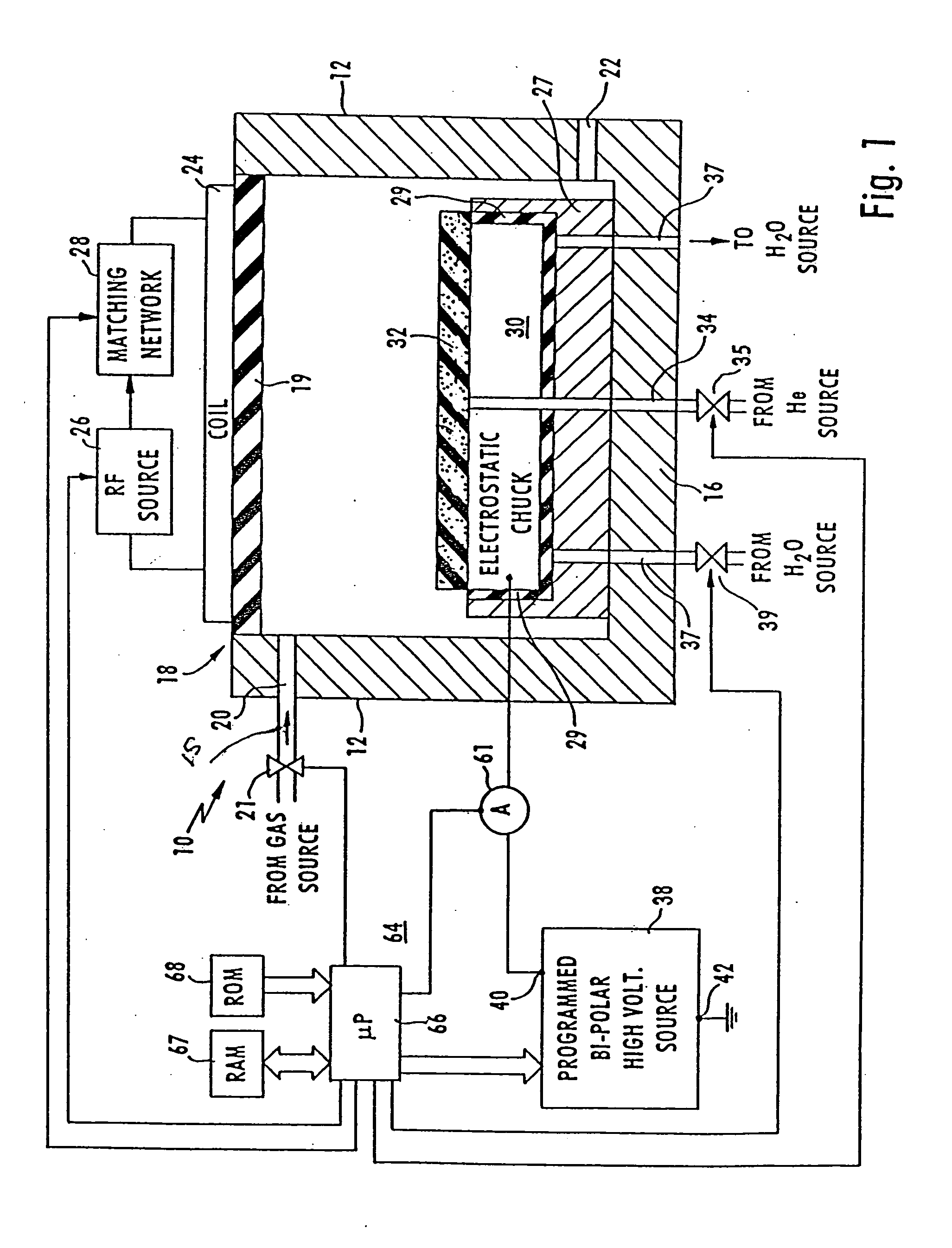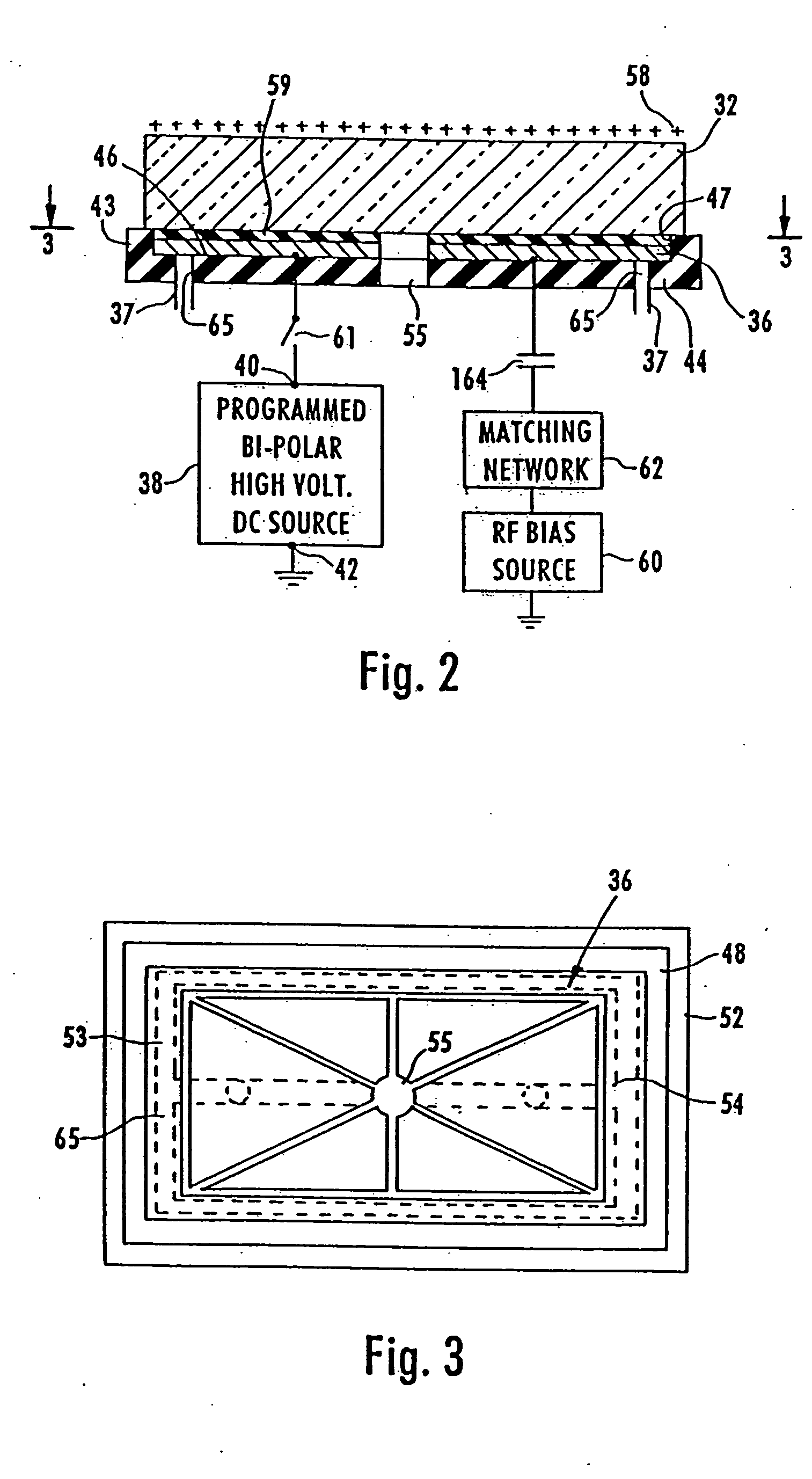Dechucking method and apparatus for workpieces in vacuum processors
a vacuum processor and workpiece technology, applied in the field of vacuum plasma processors, can solve problems such as the problem of removing certain workpieces from electrostatic chucks, and achieve the effects of increasing wafer throughput, effective measurement and control, and facilitating the removal of workpieces
- Summary
- Abstract
- Description
- Claims
- Application Information
AI Technical Summary
Benefits of technology
Problems solved by technology
Method used
Image
Examples
second embodiment
In accordance with a second embodiment, the amplitude of the reverse polarity voltage supplied by source 38 to terminal 40 is predetermined at a relatively high value, such as +4000 volts; the +4000 volt value is applicable to a situation wherein the voltages of source 36 are sequentially −1500V, −800V, −600V and −500V during processing. The reverse polarity voltage magnitude is selected to be such that VA (the voltage between the top face of electrode 36 and the bottom face of glass workpiece 32) is zero, which causes a substantial increase in VG (the voltage between the top and bottom faces of glass workpiece 32).
The magnitude of the reverse polarity voltage must be sufficient to attain this result, bearing in mind that the relative impedances of insulator 59 and glass workpiece 32 are such that only 5% to 10% of the voltage of source 38 is developed across capacitor CA. This dechucking method is for cases when the regular dechucking time constant τ− is very long. The very long t...
first embodiment
In the first embodiment, the reading of meter 61 controls the amplitude of the reverse polarity voltage and / or the length of time the reverse polarity voltage is applied by source 38 to chuck 30. Ideally, no current flows if the substrate was perfectly dechucked. If the most recent peak current increases in amplitude relative to the immediately preceding peak current, microprocessor 66 increases the amplitude of the applied reverse voltage and / or the length of time the reverse voltage is applied. If, however, the most recent peak current is negative in amplitude relative to the immediately preceding peak current, microprocessor 66 decreases the amplitude of the applied reverse polarity voltage and / or the length of time the reverse polarity voltage is applied to chuck 30.
The electrical resistivity of low and intermediate resistivity dielectric glass workpieces strongly depends on workpiece temperature as shown by Table I (supra). FIG. 6 is a plot of the discharge time constant τ− fo...
PUM
| Property | Measurement | Unit |
|---|---|---|
| Gamut index | aaaaa | aaaaa |
| Force | aaaaa | aaaaa |
| Electric potential / voltage | aaaaa | aaaaa |
Abstract
Description
Claims
Application Information
 Login to View More
Login to View More - R&D
- Intellectual Property
- Life Sciences
- Materials
- Tech Scout
- Unparalleled Data Quality
- Higher Quality Content
- 60% Fewer Hallucinations
Browse by: Latest US Patents, China's latest patents, Technical Efficacy Thesaurus, Application Domain, Technology Topic, Popular Technical Reports.
© 2025 PatSnap. All rights reserved.Legal|Privacy policy|Modern Slavery Act Transparency Statement|Sitemap|About US| Contact US: help@patsnap.com



